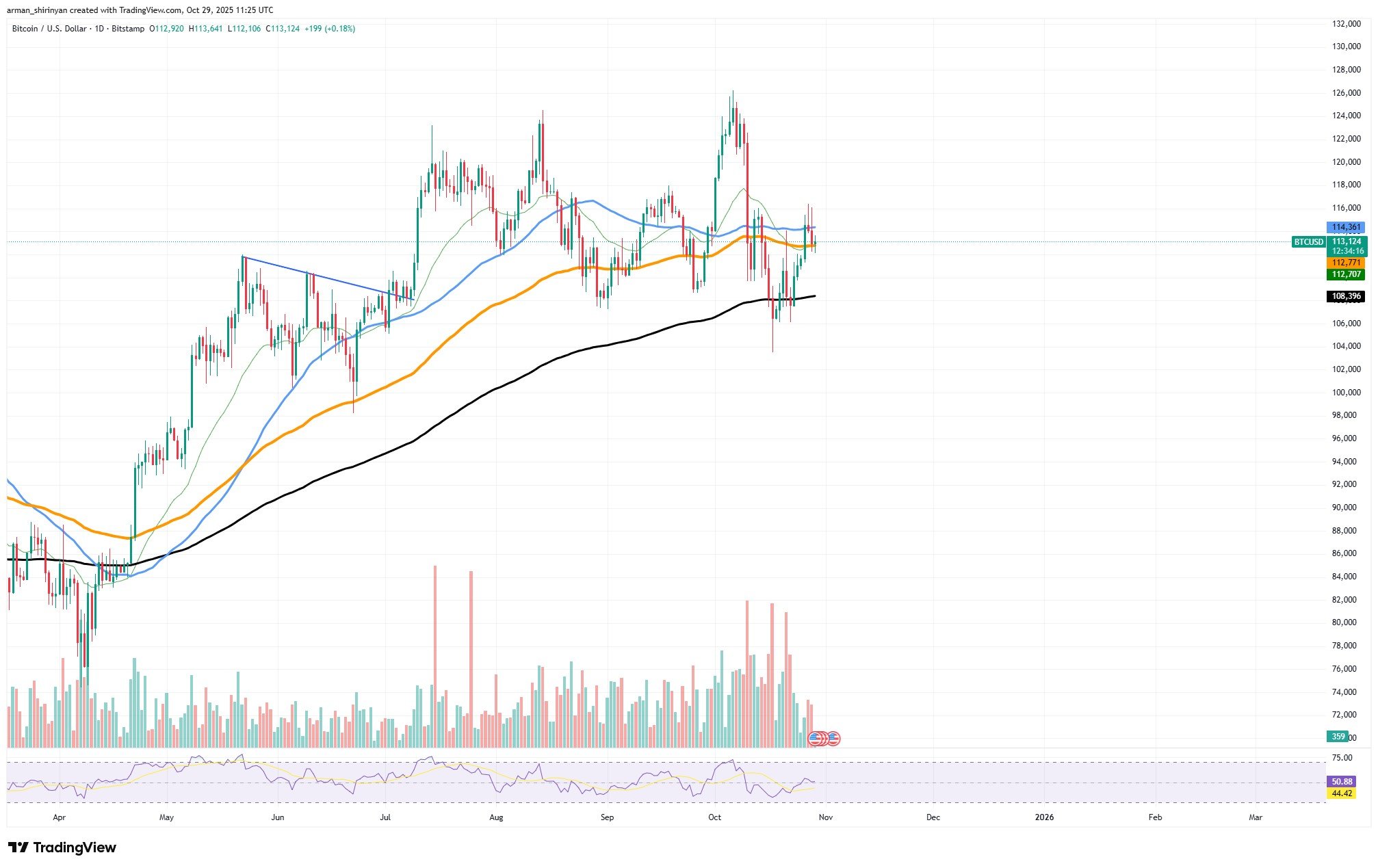Bitcoin liquidity clusters in October 2025 are forming around $117,000, $114,000, and $111,000, signaling potential volatility as the price hovers between $113,000 and $114,000. These zones highlight key battlegrounds where short and long liquidations could trigger breakouts or corrections toward $120,000 or $108,000 support levels.
-
Upper cluster at $117,000: Packed with short liquidations, a break above this could spark a squeeze pushing prices higher rapidly.
-
Midzone at $114,000 serves as the current trading battleground with balanced liquidity from buyers and sellers.
-
Lower cluster below $111,000: Features heavy long liquidations, where a drop could accelerate corrections, backed by exchange data showing concentrated positions.
Discover Bitcoin’s liquidity clusters in October 2025 and how they influence price action near $114,000. Analyze key zones for volatility risks and trading strategies—stay ahead in the crypto market today.
What Are Bitcoin’s Key Liquidity Clusters in October 2025?
Bitcoin liquidity clusters refer to areas on the price chart where significant trading positions accumulate, often leading to heightened volatility upon triggers like breakouts or breakdowns. In October 2025, these clusters are prominently visible around $117,000, $114,000, and below $111,000, as observed in exchange heatmaps from platforms like Binance. This setup positions Bitcoin in a precarious balance, with the current price range of $113,000 to $114,000 acting as a neutral zone where market participants are vying for control.
Technically, Bitcoin maintains support above the 200-day exponential moving average (EMA) near $108,000, providing a foundational buffer against deeper declines. Meanwhile, the 50-day and 100-day EMAs form overhead resistance, compressing price action into a tightening pattern that often precedes decisive moves. Traders and analysts, including those from TradingView communities, emphasize that such configurations underscore the market’s sensitivity to external catalysts like macroeconomic news or institutional inflows.

BTC/USDT Chart by TradingView
Exchange data, such as the Binance BTC/USDT liquidation heatmap, reveals these three primary liquidity pockets, each with distinct implications for short-term price direction. Understanding them is crucial for navigating the current consolidation phase, where Bitcoin’s failure to sustain gains above key levels highlights ongoing bearish pressures.
How Do These Liquidity Clusters Impact Bitcoin’s Price Momentum?
The upper liquidity cluster at $117,000 stands out due to its density of short positions, where leveraged bets against Bitcoin are concentrated. A decisive push beyond this level could cascade into short liquidations, potentially propelling the price toward $120,000 in a rapid squeeze. Historical patterns from similar setups in 2024, as noted by market analysts at firms like Glassnode, show that such events often result in 5-10% intraday surges, driven by forced covering of shorts.
In the midzone around $114,000, liquidity is more evenly distributed between longs and shorts, creating a volatile equilibrium. This area has seen repeated tests, with buyers defending against dips and sellers capping rallies, leading to choppy trading. Data from on-chain metrics indicates that whale activity—large transactions exceeding 1,000 BTC—has intensified here, suggesting institutional players are positioning for a resolution. For instance, a sustained close above $114,000 could signal renewed bullish control, while failures might reinforce bearish sentiment.
Below $111,000, the lower liquidity magnet draws attention for its cluster of long liquidations, where over-leveraged bullish positions risk wipeouts. A decline to this zone could trigger a flush of these positions, exacerbating a correction down to the $108,000 EMA support. According to reports from CryptoQuant, liquidation events in this range have historically led to 3-7% pullbacks, clearing weak hands and setting the stage for potential rebounds. Experts like those at Chainalysis warn that in a risk-off environment, such magnets amplify downside momentum, making risk management essential for traders.
Overall, these clusters illustrate Bitcoin’s contracting price framework, where proximity between $111,000 and $117,000 fosters high-stakes volatility. The market’s direction into November 2025 will likely hinge on weekly closes, with catalysts like Federal Reserve announcements or ETF flow updates playing pivotal roles. Maintaining a neutral stance amid this setup allows for balanced exposure, as emphasized by seasoned traders monitoring volume profiles.
Bitcoin’s resilience above core supports reflects broader adoption trends, with institutional interest from entities like BlackRock continuing to underpin demand. However, geopolitical tensions and regulatory developments remain wildcard factors that could sway liquidity dynamics. By focusing on these zones, investors gain actionable insights into probable price paths, ensuring informed decision-making in an unpredictable landscape.
Frequently Asked Questions
What Causes Bitcoin Liquidity Clusters to Form in 2025?
Bitcoin liquidity clusters form due to accumulations of leveraged positions on exchanges, influenced by trader sentiment and technical levels. In 2025, factors like ETF approvals and halvings have concentrated orders around psychological prices such as $114,000, where stop-losses and take-profits cluster, per data from platforms like Binance and Bybit. This setup heightens the risk of cascading liquidations during breakouts.
How Can Traders Prepare for Volatility from Bitcoin’s $117,000 Cluster?
Traders should monitor order book depth and use tools like liquidation heatmaps to anticipate moves from the $117,000 cluster. Setting stop-losses below key supports and scaling into positions gradually helps manage risks, as this zone’s short squeezes can lead to swift 5%+ rallies. Voice search queries often highlight the need for real-time alerts to catch these opportunities effectively.
Key Takeaways
- Monitor the $117,000 upper cluster closely: Breaking this level could unleash short liquidations, driving Bitcoin toward $120,000 amid heightened volatility.
- $114,000 midzone demands caution: Balanced liquidity here sustains range-bound trading, but a bullish close above it may signal momentum shifts supported by whale activity.
- Prepare for lower $111,000 risks: Long liquidations in this area could accelerate corrections to $108,000—consider hedging strategies to protect portfolios.
Conclusion
In summary, Bitcoin’s liquidity clusters in October 2025 around $117,000, $114,000, and $111,000 underscore a market poised for volatility, with the current $113,000-$114,000 range serving as a critical pivot. These zones, informed by exchange heatmaps and on-chain data, highlight the interplay of technical supports like the 200-day EMA and resistance from shorter EMAs. As the month closes, staying vigilant for breakouts or breakdowns will be key. Looking ahead, Bitcoin’s trajectory into November could solidify bullish trends if upper clusters resolve favorably, empowering investors to capitalize on emerging opportunities in the evolving crypto ecosystem—consider reviewing your positions now for optimal alignment.





